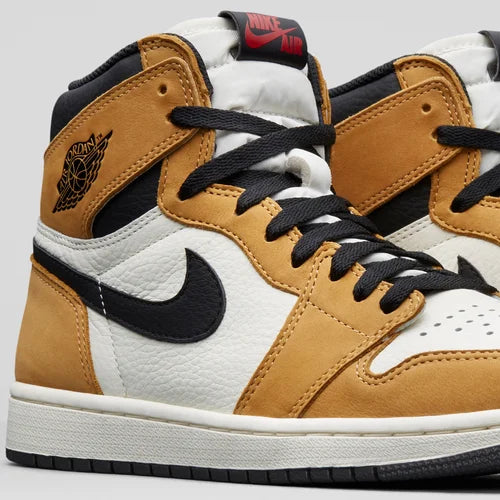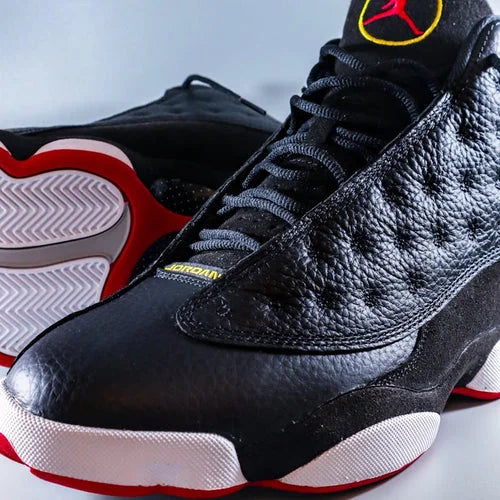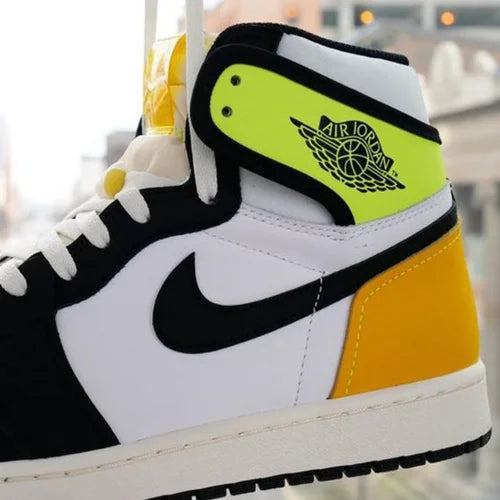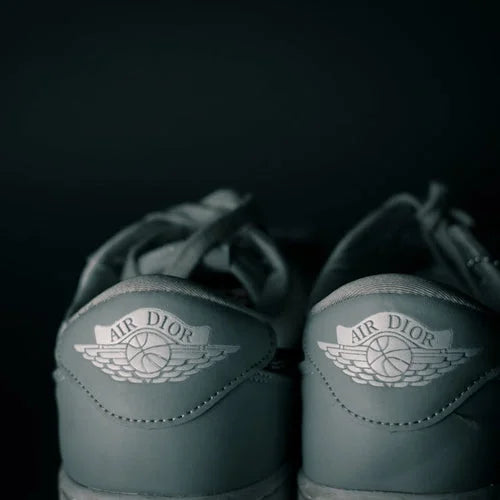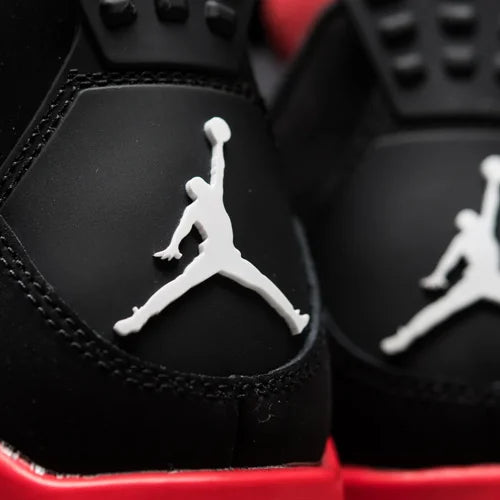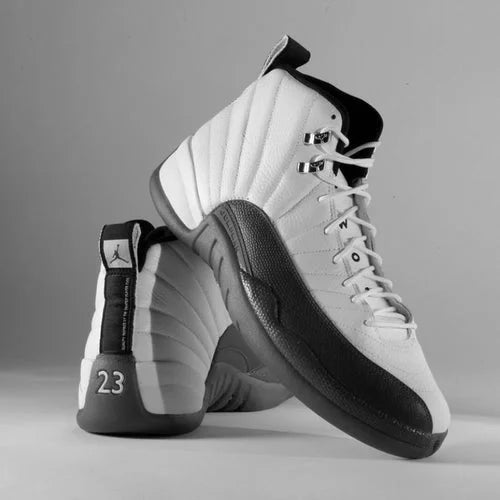How To Spot Real vs Fake Air Jordan 1 Lost & Found

The Air Jordan 1 Lost & Found is a popular shoe in Nike's collection. The iconic design by Peter Moore, paired with Michael Jordan's branding, was released in 1985.
The famous Jumpman logo, high-top silhouette, and bold colorway are the signature features of this sneaker. The retro design evokes nostalgia, making it a favorite among sneaker enthusiasts.
Wonder where the Lost & Found name came from? It dates back to when there were no advanced inventory tracking systems, and the products were tracked using pen and paper. With this, the shoes were displaced and found years later.
The iconic sneakers don't only get attention from sneakerheads but also from counterfeiters seeking to capitalize on the high demand. Buyers must be careful when shopping since fake products closely resemble the original.
When it is difficult to spot a difference, our complete lost and found real vs fake guide helps you. We share the best methods to authenticate this product.
Table of Contents
[ open ]Initial Inspection

We start this authentication guide with an initial inspection. We are interested in checking the proof of purchase, box, box label, and shoe smell.
The proof of purchase can help you distinguish lost and found real vs fake. If you're looking at vintage sneakers, they should come with a paper receipt. Analyze the fonts, text placement, and logo and compare them to the original.
Next, we moved to inspecting the shoe box. Look for inconsistencies in the font size, color, and logo. The original box should have a vibrant color and high-quality print.
The fake box label might look identical to the original, but you can spot the differences if you look closely. Thinner letters and less space between the barcode and text indicate a fake product.
Lastly, we round up this method with the smell test. Real Nike shoes are made of leather, which has a pleasant musky smell. If you can sense a strong chemical odor, this indicates a counterfeit sneaker.
We already provided a guide for spotting fake Jordan 1s, so don't miss it if you want to know more.
Hourglass Shape

For the next step, we inspect the shoes' rear. Original Lost & Found has a distinguishable hourglass shape when looked at from behind. The shoe gets narrow in the middle where the seam is located.
On the other hand, the fake sneaker lacks a moderately pronounced curve and a relatively straight shape.
Swoosh
The swoosh logo is a signature feature of Nike sneakers. Even though counterfeiters create identical copies, the sleek finish of a big-name brand is unparalleled.
First, we analyze the Swoosh shape. It should have a pointy top closer to the laces and a thick middle. Also, take some time to explore the stitching.
Poorly done stitching is an indicator of a fake product. Also, the original piece should be precisely cut with clean edges.
Material Quality
The Lost & Found shoe has a distinct distressing effect in the upper part to achieve the retro vibe. In the original shoes, the distressing has an irregular pattern and is more intense.
On the contrary, the distressness isn't that prominent in the fake shoe. Despite being faded, the pattern has a larger grain when compared to the original.
Air Jordan Logo
The quality of the Air Jordan logo is another sign that gives off a fake product. The authentic logo is deeply embossed into the leather. Also, the ink quality is entered in the original.
On the other hand, the fake logo is fairly printed on the surface. On touch, it won't feel textures like the original. Further, we look closer at the lettering and wings to pinpoint the crucial details.
Lettering
When analyzing the logo, look for font size and letter placement inconsistencies. The original Air Jordan logo has a sleek design, where the font remains consistent with the branding.
On the other hand, the fake logo comes with thicker letters. Also, you can notice a difference in alignment.
Wings
The wings on the Air Jordan logo can help us reveal if a product is real or fake. The original logo has gaps between the wing feathers, which look harmonious.
On the other hand, the wing feathers are too close to the fake loog. You can also notice the poor printing quality in closeup photos.
Size Tag
For further examination, we check the size tag located inside the shoe. Counterfeiters go a step forward and try to copy the exact size tag. They will use the same style code, so it is hard to differentiate by analyzing the number.
However, you can still notice inconsistencies in the fake tag. Even though they copied the exact numbers, you can see differences in font, size, placement, and printing quality. For example, the letters might be thinner than the original.
The Tongue
The tongue of the sneaker can also reveal a counterfeit product. If you compare the real and fake, you will see how the fake one has a more extended tongue. Also, the stitching is positioned higher on the tongue.
Interior Tongue Label
Further, you can distinguish a fake product by observing the interior tongue label. Air Jordan 1 Lost & Found has a red label with white letters.
Even though the real and fake look almost identical, the trained eye can instantly spot the differences. First, we can notice a difference in the letter thickness. The fake label has thicker and clumsy letters, indicating poor printing quality.
Also, you can notice how the font differs in lost and found real vs fake labels. The difference is prominent in the letter "O," as it has a rounder shape in the original.
Toe Box
The toe box method is essential for distinguishing between lost and found real vs fake. We analyze the shape and perforations to authenticate the sneakers.
Shape
Next, we analyze the toe box shape in real and fake models. When you look closer, you can see how the authentic toe box is higher and more inflated.
We won't see the pronounced curve and elevation in the fake shoe. The toe box is also flat, which doesn't only affect the shoe design but also influences comfort.
Perforations
As with other Nike models, the Air Jordan 1 Lost & Found has perforations on the toe box. These can help you reveal a fake product.
The original shoe has precise and small perforations. Although the fake shoe copies the same pattern, we can see that the size differs. The counterfeit sneaker has visibly large perforations.
Invoice Receipt
Original Air Jordan 1 Lost & Found comes with a receipt as proof of purchase. Vintage models come with a handwritten paper receipt.
However, you should be careful with this authentication method and not rely solely on it. Counterfeit shoes can come with a fake receipt, so comparing them to the original is better to spot the differences.
But another scenario to consider is a fake product with a swapped original receipt. Therefore, approach this method with caution and combine it with others.
Outsole

The outsole of Air Jordan 1 Lost & Found has a vibrant red color and a recognizable pattern. Any difference in color intensity is an indicator of a fake product.
Also, pay attention to how the pattern is carved. Counterfeit outsoles won't have precise edges and details.
Insole
Lastly, check the insides of your Air Jordan 1 Lost & Found. First, we take a closer look at the texture.
The original insole is smooth and shiny, while the fake one has a pronounced texture. Next, we observe the DreamCell engraving.
While the number might be the same in the counterfeit shoe, look for any clues that indicate a fake. Clumsy letters and poor embossing are the telltale signs of a fake insole.
Bottom Line
Our detailed lost and found real vs. fake guide shared the authentication methods with step-by-step instructions. Whether purchasing the shoes online or from second-hand stores, you can always refer to them for help.
However, it might be difficult for beginners to pinpoint the exact details. Contact us now; we will be more than happy to provide authentication services for peace of mind!

